This is the third part of a four part series on the perils of day and position trading in futures and forex markets. In this part, the results of simulations involving a large number of random trading systems using intraday EURUSD data confirm the empirical fact that only a very small percentage of forex day traders are profitable.
In Part One, I presented the results of a simulation of a large number of random E-mini S&P 500 futures day trading systems that confirmed the empirical fact that only a very small percentage of day traders in that market are profitable. In Part Two, it was also confirmed that only a small percentage of undercapitalized position traders in E-mini S&P 500 futures are profitable. This part deals with forex day trading.
Day trading is a popular style based on intraday timeframes, such as 1-minute, 5-minute, 30-minute or even faster time intervals. All trades executed during a day are exited before market close.
Although it is well-known that day traders in forex have low chances of success, many try to beat the odds with all sorts of random methods, including charting, indicators, machine learning, etc. Some even think that using state-of-the-art programming languages such as R or Python and doing statistical analysis will change the odds to their favor. In most cases, these traders ignore the fact that the retail forex market is designed to benefit market makers at the expense of retail traders. This is accomplished by the bid-ask spread and no matter how small this spread is it has a catastrophic impact on winning odds of retail traders.
Although there is a small possibility of having an edge in forex day trading, this is an unusual case that is not the subject of this article, which deals with the odds of the majority of retail traders who think they have some edge but in reality their trading is indistinguishable from random. This is true for 99.99% of the participants of this market and the few that have an edge can be considered statistical outliers. Note however that it is quite hard for any outliers to prove that they possess an edge and their results were not due to chance alone
Simulations
A random sample of 4662 bars of spot EURUSD (bars numbered 10000001 to 1004662) was selected from historical 30-minute data. This sample was used to perform the following simulations:
1) A fair coin is tossed before the close of the first bar of the data sample. If heads shows up, then any open short position is closed and one standard lot is bought at the close. Any open long position is closed and one standard lot is sold short when tails show up. This is repeated until the end of the sample and then the net return of the resulting sequence of entry and exit points (system) is calculated. A random system is stopped if its initial equity is reduced below the required margin. Ruin occurs when equity drops close to zero.
2) The simulation in (1) is repeated 20,000 times.
3) A distribution of the 20,000 net return values is plotted and several statistics are calculated.
4) For simplicity, the bid price is the traded price for both long and short positions, something that it is not the case in reality as retail traders can only buy at the ask and sell at the bid. Using the bid price makes the simulation more optimistic for the long side and any conclusions of this study are conservative in that respect.
5) Leverage of 50:1 was assumed in all simulations, resulting in an initial margin of $2,000 per standard EURUSD lot.
Case 1: Frictionless trading: Initial capital: $100,000, Commission each way: 0
Below is the distribution of the returns of the 20,000 random entry and exit sequences generated by tossing the fair coin:
The above distribution confirms the zero-sum nature of forex trading: 49.91% of random systems, i.e., nearly 50% of them, were profitable with a mean return of 0%. The distribution is almost normal with small negative kurtosis and positive skewness. No random systems were stopped or ruined. The lowest return was -32.08% and the highest was +36.80%.
Case 2: Initial capital: $100,000, Spread: $10
Next, we apply one pip spread each way to all trades and repeat the simulation for the same initial capital of $100,000. Below is the new distribution of the net return:
There are no winning systems after the introduction of a spread of one pip. The small spread had a significant effect on the random systems return distribution in the sense that the mean was shifted to the left and specifically to -45.57%. Note that in many situations, including fast markets, forex spreads can become substantially larger due to an effort of market makers to preserve their profits and also due to a lack of liquidity, although the mechanics are much more complicated than that.
What is more interesting to note is that the previous simulation was done with $100,000 capital per standard lot. Virtually no retail trader puts aside that much to trade forex. Typical starting capital levels are between $20,000 and $5,000 for a standard lot and adjusted accordingly for other lot sizes.
Case 3: Initial capital: $20,000, Spread: $10
Next, we lower the initial capital to $20,000. Spread remains at $10. Below is the new distribution of the net return of the 20,000 random systems:
The inclusions of one pip spread with $20,000 starting capital had a catastrophic effect on the distribution of returns. Nearly 100% of the random systems were stopped, meaning that equity dropped below the required margin level of $2,000. These results confirm what is already known, i.e. that nearly all retail day traders in forex lose their money, except those few, usually a tiny percentage in the order of 0.01%, who possess a true edge.
Case 4: Initial capital: $100,000, Spread: $10, 4-hour data
Next, a random sample of 2698 bars of the currency pair EURUSD (bars numbered 10000001 to 1002698) was selected from historical 4-hour data. The initial capital was set at $100,000. Spread is $10. Below is the new distribution of the net return of the 20,000 random systems:
Despite the large starting capital and the longer timeframe, there are no winners, as it was expected and 98.67% of random systems are stopped while about 0.1% of them are ruined completely. Increasing the intraday timeframe does not help, even with no effective leverage in play ($100,000 initial capital per standard lot.) The inclusion of one pip spread had a catastrophic effect on distribution of returns. Only traders with a significant edge can profit as the forex market shows no mercy to random traders (unlike the stock market.)
For possible objections to this study and a few remarks see Parts One and Two. The conclusion from this third part is that the majority of forex day traders are doomed to lose to market makers and the mechanism for that is the spread. Only those with a significant edge that do not trade frequently have a chance to profit but in that case there may be some other problems, such as large drawdown levels that significantly impact profitability by increasing capital requirements. Despite all these, the forex market is a good one to use for the purpose of developing trading skills but only when considering the initial capital as tuition paid.
You can subscribe here to notifications of new posts by email.
Analysis program: Price Action lab
© 2015 Michael Harris. All Rights Reserved. We grant a revocable permission to create a hyperlink to this blog subject to certain terms and conditions. Any unauthorized copy, reproduction, distribution, publication, display, modification, or transmission of any part of this blog is strictly prohibited without prior written permission.


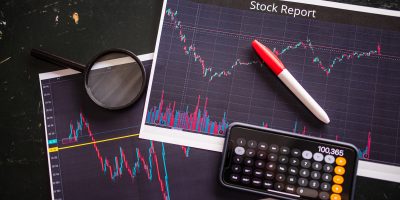
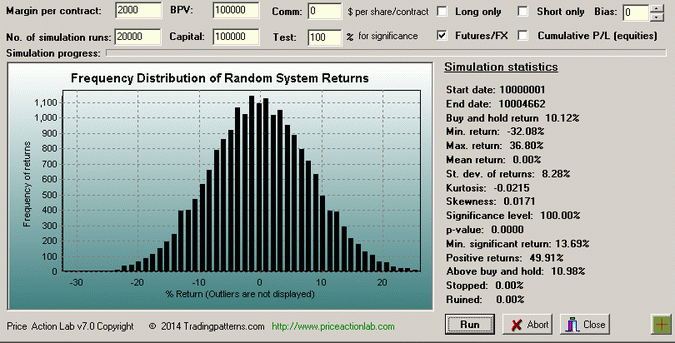
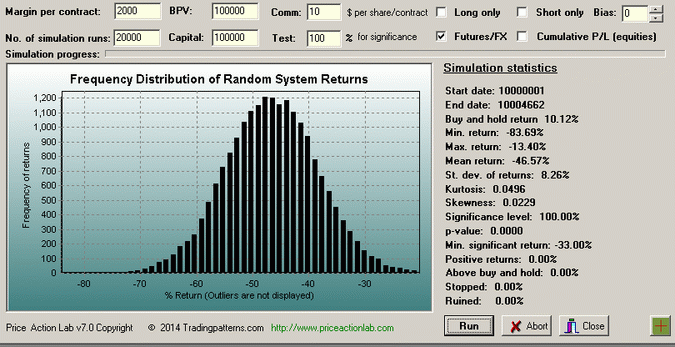
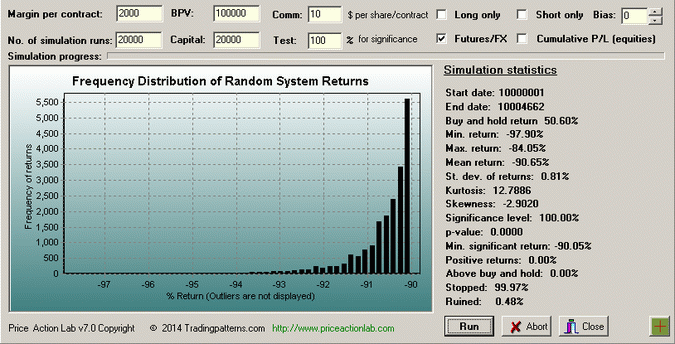

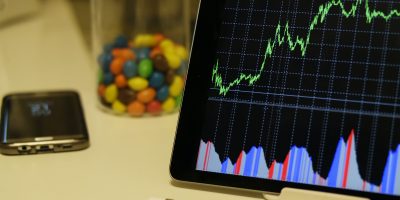
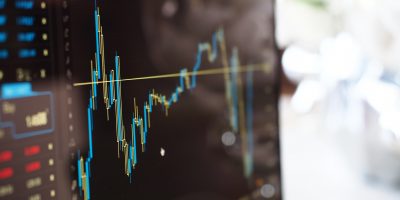





matt haines
One point I'd like to address in your post: you mention $100k as starting capital and that most retail traders would trade with much less. However many forex brokerages allow margin trading up to 1:500, so it's very easy to control $100k without actually needing $100k.
Michael Harris
Hello Matt,
The $100K is the initial cash in the account. You can have as much cash as you want in the account. Note that the simulation included margin of $2,000. Thus 50:1 leverage is assumed (maximum for US) but there is also the effective account leverage, which for $100K is 1:1
One could buy one lot with $10,000 and the effective leverage would be 10:1 in that case. See this article for more details:
https://www.priceactionlab.com/Blog/2012/12/leverage-margin-and-trading-account-capitalization/
For most traders the effective leverage is between 10:1 and 20:1. This is not the leverage on margin but the leverage on the cash account.
Andreas Howell
Michael,
Thanks for the article! It offers a more rigorous explanation of the facts in forex trading.
Do you think that forex trend-following is possible?
Andreas
Michael Harris
Hello Andreas,
All styles of forex trading are possible if there is an edge. In intraday trading the edge must be large enough to cover friction induced from the spread, in position trading it must deal efficiently with short-term randomness and in trend-following the edge should be such so that drawdown levels from large swings are kept at a minimum. Thanks.